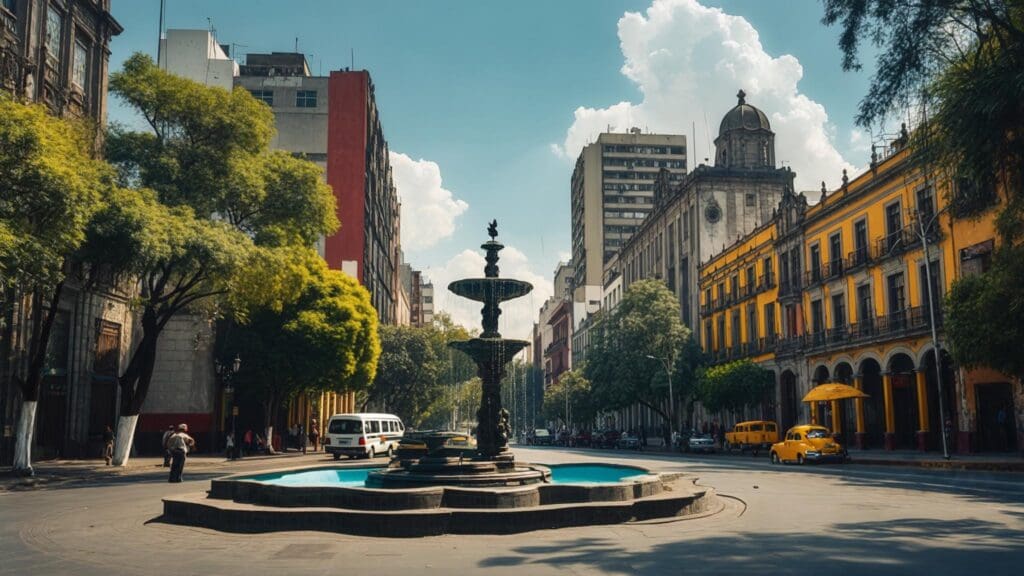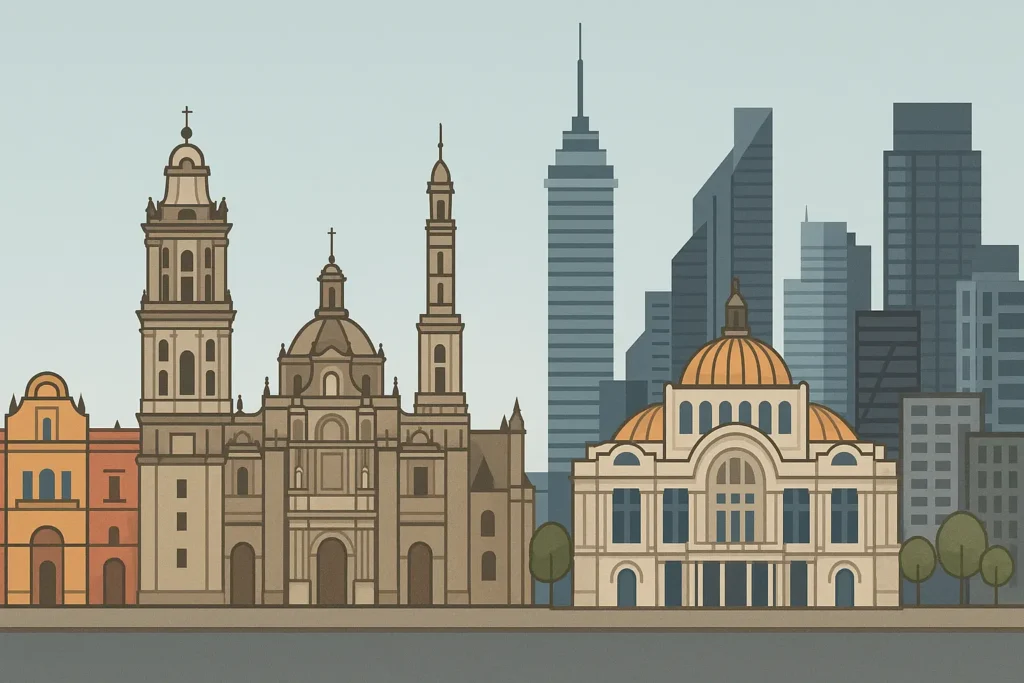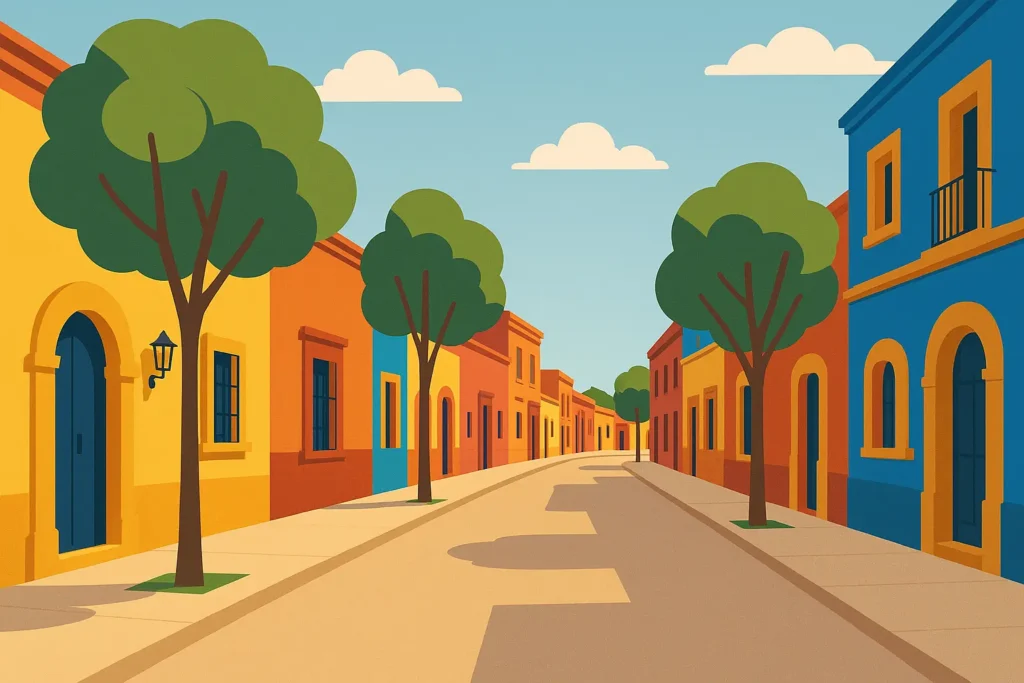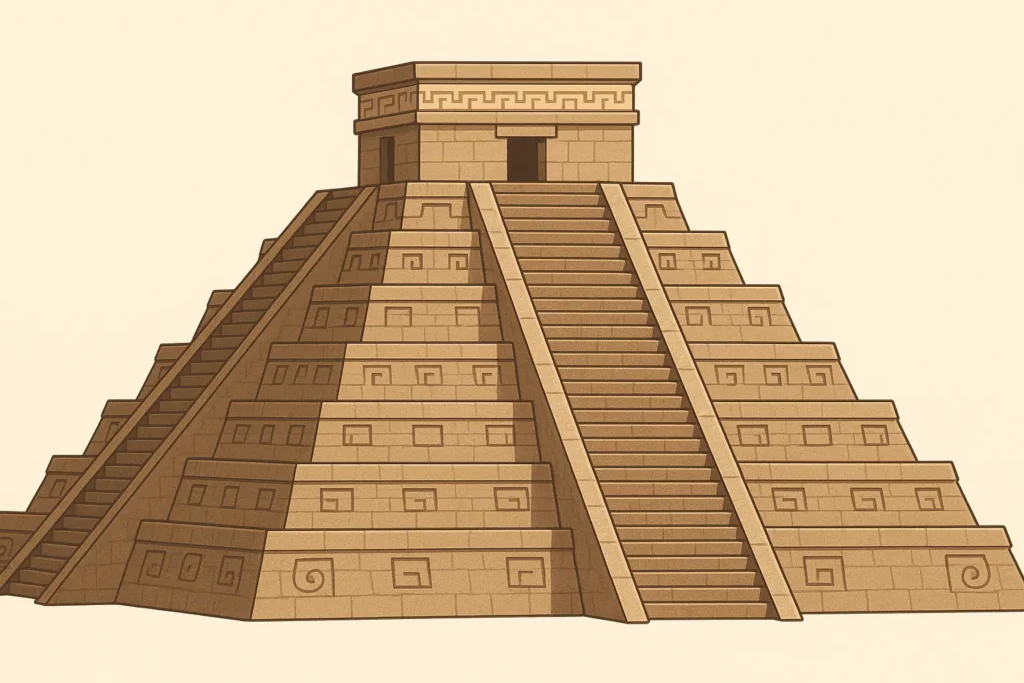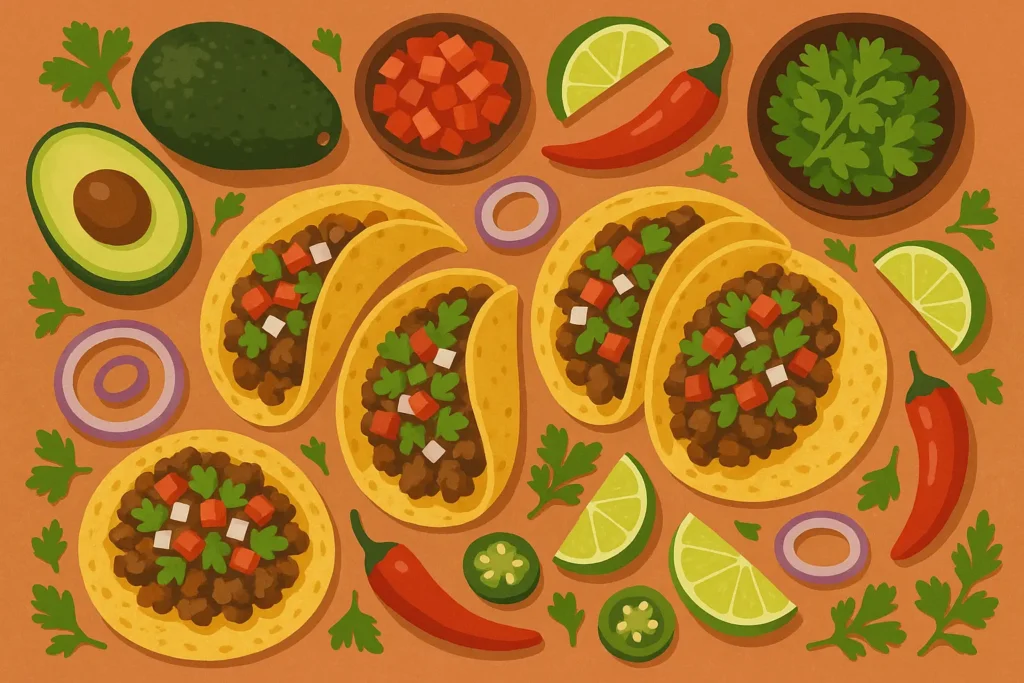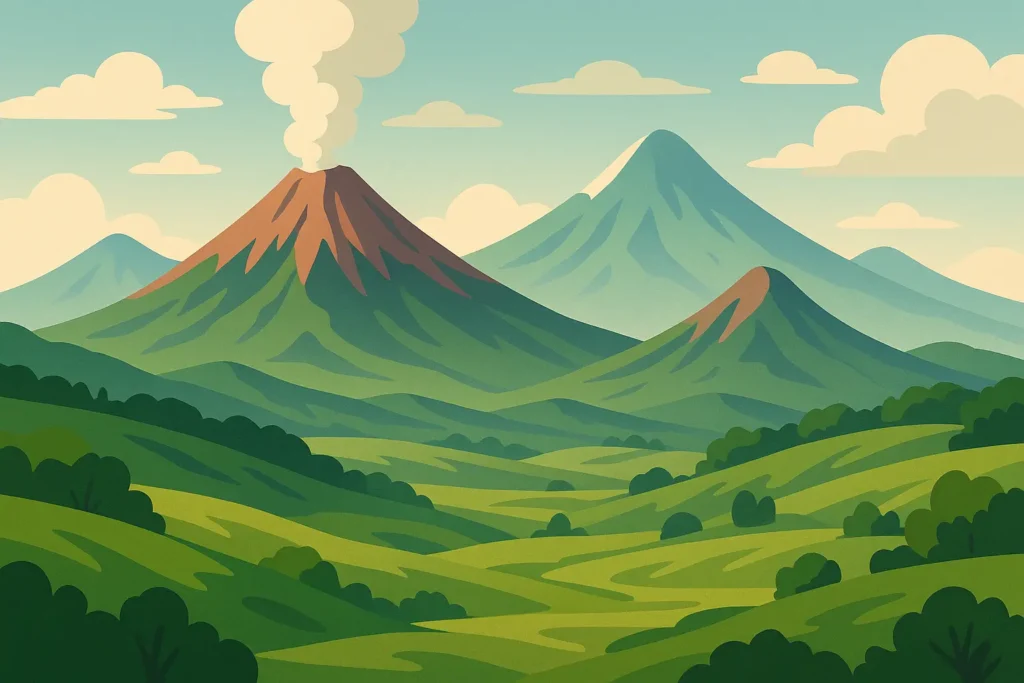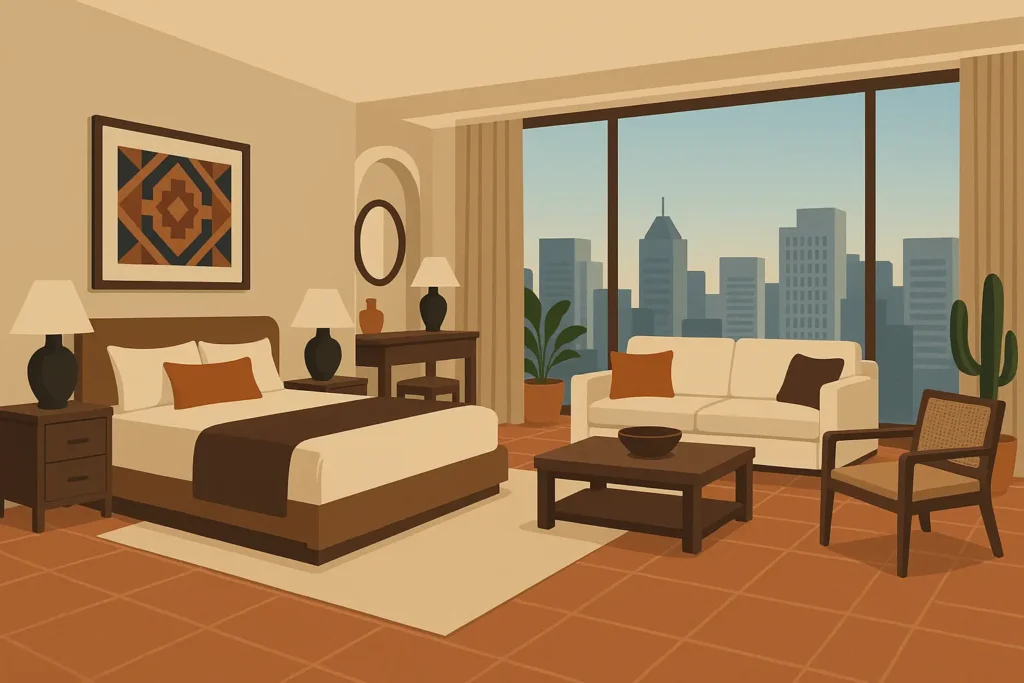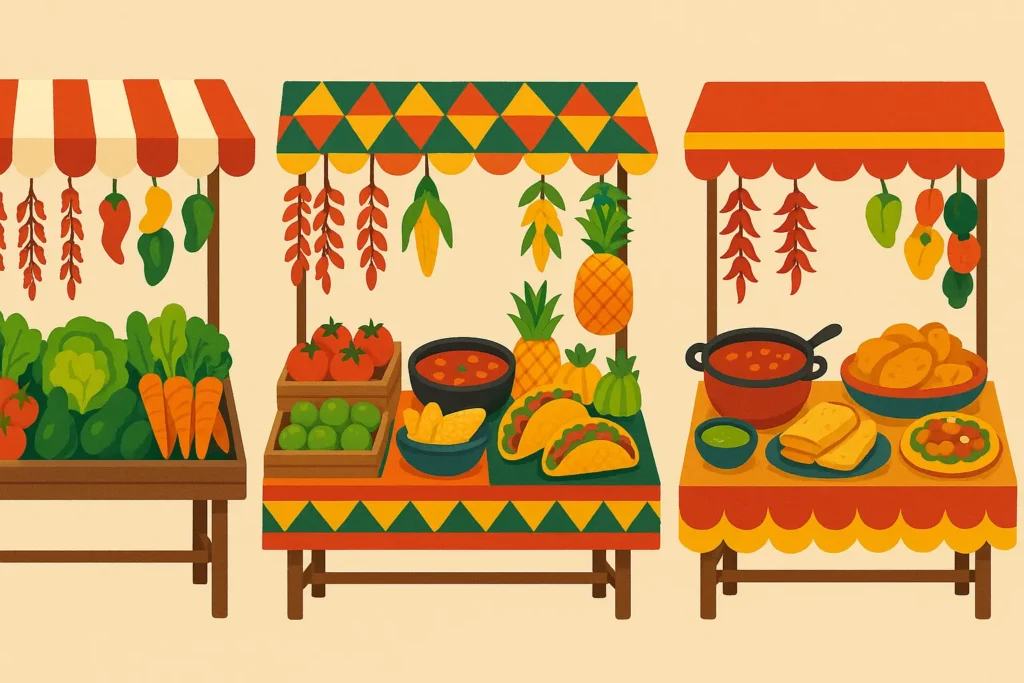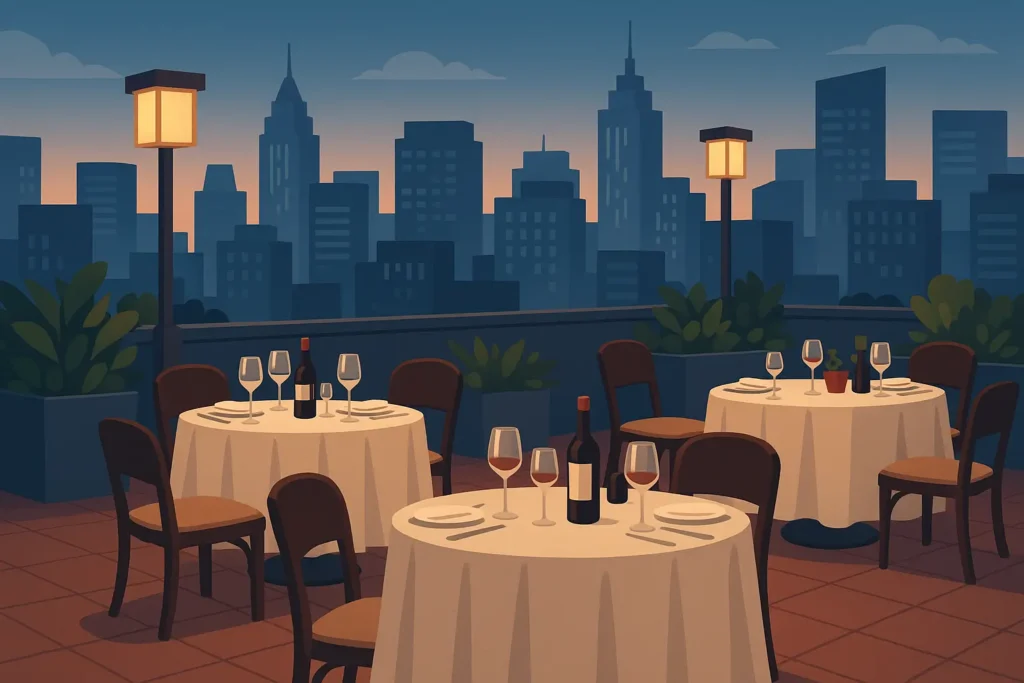I’ll be honest – when I first stepped off the plane in Mexico City, I was completely overwhelmed. The sheer size of this place, the altitude hitting me like a wall, the incredible energy… But after nearly a month of getting wonderfully lost in its neighborhoods, I’ve figured out the secret: it’s all about finding YOUR Mexico City.
This city attracts over 13 million international visitors annually, making it one of the world’s most popular urban destinations. After testing these itineraries myself across multiple trips, I’ve put together 25 different ways to experience this incredible metropolis. Whether you’re here for ancient ruins, street tacos, world-class art, or luxury romance, there’s a Mexico City itinerary that’ll blow your mind.
Ready to build your dream itinerary? Try our Vacation Planner to design your perfect Mexico City trip.
Quick Resources:
-
Start organizing your Mexico City getaway with our Vacation Planner
-
Turn your romantic trip into a dream honeymoon using our Honeymoon Planner
-
Thinking about a destination wedding? Begin with our Elopement Planner
-
Explore our full set of wedding & travel tools at All Wedding Tools
TL;DR
- Mexico City offers 25+ distinct itinerary types for every travel style – from 3-day street food adventures to 15-day digital nomad experiences
- Cultural Mexico City itineraries (5-8 days) work best for history buffs wanting deep dives into ancient civilizations and colonial heritage
- Food-focused trips (3-5 days) range from budget street food tours to high-end culinary experiences at world-renowned restaurants
- Art lovers should plan 4-7 days to explore everything from Diego Rivera murals to contemporary gallery scenes
- Adventure seekers can combine urban exploration with nature escapes and volcano hikes in 4-7 day Mexico City itineraries
- Budget travelers can experience authentic Mexico City for 6-15 days using hostels, street food, and free cultural activities
- Luxury experiences require 4-5 days and higher budgets but offer unparalleled comfort and exclusive access
- Location choice significantly impacts your experience – Roma Norte, Condesa, and Juarez offer the best central access
Planning Your Perfect Mexico City Adventure
Look, planning a Mexico City itinerary isn’t like planning a trip to Paris where you can walk everywhere. This city is MASSIVE – we’re talking North America’s largest by population – and sits at 7,350 feet above sea level. Your planning decisions around duration, neighborhood selection, transportation, and budget will make or break your entire experience.
Let our Vacation Planner simplify your big-city travel planning from budget to transportation.
Essential Planning Factors
Duration matters way more here than most places. You’ll need a minimum of 3 days just to scratch the surface, but honestly, 4-6 days gives you breathing room to actually enjoy what you’re experiencing instead of rushing around like a maniac. That altitude adjustment alone knocked me sideways for the first day – don’t underestimate it.
| Trip Duration | Best For | What You Can Actually Do | Real Budget Range |
|---|---|---|---|
| 3 Days | First-timers, weekend warriors | Major highlights, one specialty focus | $200-800 total |
| 4-6 Days | Most people (this is the sweet spot) | 2-3 specialty areas, time to breathe | $400-1500 total |
| 7-10 Days | Culture nerds, comprehensive trips | Deep cultural immersion, day trips | $700-2500 total |
| 11-15 Days | Digital nomads, extended stays | Full neighborhood integration | $800-3000 total |
Here’s the deal with neighborhoods: Roma Norte is like Brooklyn had a baby with Barcelona – trendy coffee shops next to century-old buildings, incredible people-watching, and you can walk to most things. Condesa is Roma Norte’s slightly more polished older sibling with gorgeous parks. Juarez gives you similar vibes at more budget-friendly prices. Pick wrong and you’ll spend half your time in traffic.
Compare neighborhoods and map your stay with our free Vacation Planner.
You need to get honest about your cultural priorities upfront. Are you here for world-class museums, ancient archaeological sites, colonial architecture, or contemporary art? Mexico City excels at all of these, but trying to do everything leads to serious museum fatigue and surface-level experiences that you’ll barely remember.
Sort your top experiences with our Vacation Planner — it helps you avoid museum burnout and maximize joy.
Transportation is where people mess up. The metro is ridiculously cheap but rush hour (7-9 AM and 5-7 PM) is absolutely brutal – I got completely squished between commuters and couldn’t reach the door at my stop. Uber provides comfort and works great, but it adds up fast. Walking works beautifully within neighborhoods but not between them.
Let’s talk real numbers about money. If you’re backpacking and eating street tacos, $30-40 a day will keep you happy. Want your own hotel room and some sit-down meals? Think $70-120. Going fancy with nice hotels and that Pujol dinner? You’re looking at $150+ per day. But honestly, some of my favorite Mexico City moments cost absolutely nothing.
Safety and Practical Considerations
Mexico City gets a bad rap safety-wise, but I felt totally fine wandering around Roma Norte and Condesa, even at night. Just use the same street smarts you’d use in any big city – don’t flash expensive stuff, trust your gut, and maybe don’t wander down dark alleys at 2 AM.
Language comfort makes a huge difference. English works fine in tourist zones, but basic Spanish opens doors to authentic interactions, especially in markets. I’m talking life-changing conversations with vendors who light up when you try to speak their language. Learn “¿Habla inglés?” and “Gracias” – it’ll get you surprisingly far.
What I Wish Someone Had Told Me: That 7,350-foot altitude is no joke. The sun will fry you even when it doesn’t feel that hot (I went through more sunscreen in a week than I usually use in a month), and you’ll get dehydrated crazy fast. Also, bring layers – it can be 75°F and sunny at noon, then 55°F and windy by evening.
Real Success Story: Sarah from Portland nailed her first Mexico City trip by choosing Roma Norte as her base, focusing solely on food experiences, and learning five basic Spanish phrases. By sticking to street food and markets within walking distance, she avoided transportation stress while having authentic interactions with vendors who appreciated her Spanish attempts. Her $300 budget covered four days of incredible meals and cultural experiences because she focused on one thing instead of trying to see everything.
Cultural & Historical Immersion Itineraries
Mexico City’s cultural offerings span literally thousands of years – from ancient Aztec ruins you can touch to colonial Spanish architecture to revolutionary murals that’ll give you goosebumps. I’ve tested these five specialized Mexico City itineraries myself, and each one requires different levels of walking, cultural preparation, and honestly, emotional energy.
1. Ancient Civilizations Deep Dive (7 Days)
I spent a full week chasing ancient civilizations around this city, and let me tell you – it was exhausting but incredible. If you’re the type who gets excited about climbing actual Aztec pyramids and can handle serious walking, this Mexico City itinerary is for you.
Day one starts with an early departure to Teotihuacán. Fair warning: those pyramids are no joke. The Pyramid of the Sun is 216 feet of steep stone steps, and the altitude will have you breathing hard. But when you’re standing at the top, looking out over a city that once housed 100,000+ people (bigger than most European cities of its time), it hits different.
The Templo Mayor complex on day two blew my mind. You’re literally walking through the foundations of the Aztec capital Tenochtitlan – like, the actual stones where Aztec priests performed ceremonies. The adjacent museum houses artifacts they’re still digging up, including this massive Coyolxauhqui stone that completely changed how we understand Aztec religious practices.
Day three at the National Museum of Anthropology requires mental preparation. This place is overwhelming in the best way. Get a guide – trust me on this. The Aztec calendar stone alone deserves an hour of your time, and there’s so much more that you’ll miss the significance of without expert interpretation.
2. Colonial Heritage Trail (5 Days)
This architectural journey focuses on Mexico City’s Spanish colonial period, and honestly, it’s like walking through a history textbook. Perfect if you love beautiful buildings and want to understand how European and indigenous cultures smashed together to create something completely new.
The Centro Histórico becomes your classroom for three days. The Metropolitan Cathedral sits directly on top of the main Aztec temple – talk about cultural overlay. Inside the Palacio Nacional, Diego Rivera’s murals tell the entire sweep of Mexican history across massive walls. Standing there, craning your neck up at these stories painted in brilliant colors… it literally gave me goosebumps.
Colonial churches reveal this incredible artistic fusion between European and indigenous traditions. The Templo de Santo Domingo showcases baroque architecture adapted with local materials and indigenous craftsmanship. Each church tells stories of cultural negotiation, resistance, and ultimately, something entirely new.
3. Museum Marathon (4 Days)
Don’t try to pack three museums into one day. I made this mistake on day two and ended up with such bad museum fatigue that I couldn’t appreciate the incredible Frida Kahlo pieces. Trust me, less is more here.
The National Museum of Anthropology anchors your first day – it’s genuinely one of the world’s best museums. The Palacio de Bellas Artes follows with Mexico’s most important murals alongside rotating international exhibitions that’ll surprise you.
Day three brings specialized museums. Fair warning about the Frida Kahlo Museum (Casa Azul) – it gets PACKED. Like, shoulder-to-shoulder, can’t-get-a-decent-photo packed. Book the first time slot of the day or you’ll be shuffling through with crowds. The Diego Rivera Anahuacalli Museum showcases his personal collection of pre-Hispanic art alongside his own works in a building he designed himself.
4. Revolutionary History Tour (6 Days)
This politically-focused Mexico City itinerary explores Mexico’s revolutionary period through murals and historical sites. If you’re interested in social movements and how art serves political purposes, this journey will open your eyes.
Revolutionary murals become your primary texts. Rivera’s works in the Palacio Nacional tell the story of Mexican independence and revolution through visual narratives that were designed for people who couldn’t read. The murals at the Secretaría de Educación Pública show how art served revolutionary ideals – it’s powerful stuff.
The Plaza de las Tres Culturas represents the complex layering of Mexican identity perfectly – pre-Hispanic ruins, colonial church, and modern buildings all in one space. It’s Mexico City in microcosm.
5. Indigenous Culture Experience (8 Days)
This immersive journey explores both historical and contemporary indigenous culture in and around Mexico City. It requires the longest time commitment but offers authentic cultural exchange opportunities you won’t find in guidebooks.
Contemporary indigenous markets provide direct cultural contact that’s both educational and humbling. The Mercado de la Merced showcases traditional foods, medicines, and crafts still used by indigenous communities. Vendors often speak indigenous languages alongside Spanish, maintaining cultural connections spanning centuries.
Community visits outside the city center offer deeper understanding of how ancient practices adapt to modern urban life. You’ll participate in traditional cooking methods and learn about indigenous agricultural techniques that are still relevant today.
Food & Culinary Adventure Itineraries
Your first bite of proper al pastor will ruin you for all other tacos. The meat’s been spinning on that vertical spit all day, getting crispy edges while staying juicy inside. Add some pineapple, hit it with that green salsa, and try not to order five more immediately. This is what Mexico City food culture is about – and these five Mexico City itineraries will take you deep into it.
Map your ultimate taco crawl or food itinerary with our Vacation Planner.
6. Street Food Spectacular (3 Days)
Look, I get it – the idea of eating street food can be scary. My stomach isn’t made of iron either. But here’s the thing: I followed some simple rules (hot food, busy stalls, trust your gut) and had zero issues while eating some of the best food of my life.
Day one centers on Centro Histórico. Mercado de San Juan offers exotic ingredients like escamoles (ant larvae) and chapulines (grasshoppers) alongside normal stuff. Don’t worry – you don’t have to eat the bugs, but the vendors appreciate questions about ingredients and preparation methods.
Tacos El Huequito at midday provides your al pastor education. Stand at the counter like a local, order “con todo” (with everything), and watch the trompo carving technique. Apply lime juice liberally – one full lime per taco is totally normal.
| Food Experience | Real Cost | Best Time | How Adventurous? |
|---|---|---|---|
| Street tacos | $1-3 per serving | 11am-2pm, 7pm-10pm | Easy start |
| Traditional markets | $5-15 per meal | 9am-3pm | Getting braver |
| Cantinas & pulquerias | $10-25 per experience | 5pm-9pm | Full commitment |
| Fine dining | $80-200 per person | 7pm-10pm | Your wallet’s choice |
Evening brings Las Duelistas for authentic pulque experience. The pulque tastes like… well, imagine if someone fermented the inside of a cactus. It’s an acquired taste, but watching the after-work crowd gather around tiny tables, arguing about football while sipping this ancient drink, is pure magic
Roma Norte and Condesa fill day two. Mercado Medellín showcases how immigration influences Mexican cuisine – Lebanese, Jewish, and other international elements mixed into traditional preparations. Street vendors throughout these neighborhoods offer esquites (corn cups) and elotes (corn on the cob) with creative toppings that’ll make you rethink corn forever.
7. Fine Dining & Cocktail Culture (5 Days)
This upscale culinary journey requires serious advance planning and a healthy budget, but if you can swing it, Mexico City’s restaurant scene will completely change how you think about Mexican cuisine.
Pujol and Quintonil require reservations months in advance – I’m not kidding. Both restaurants offer transformative experiences that redefine Mexican cuisine. Pujol focuses on traditional techniques with modern presentation, while Quintonil goes full molecular gastronomy. Both are worth every peso.
Cocktail culture here is world-class. Limantour consistently ranks among the world’s best cocktail bars, while smaller spots in Roma Norte showcase mezcal and tequila in ways that’ll make you forget everything you thought you knew about Mexican spirits.
8. Market & Cooking Immersion (4 Days)
This hands-on experience combines traditional market tours with cooking classes. If you want practical skills alongside cultural understanding, this Mexico City itinerary gives you recipes and techniques you can actually recreate at home.
Aura Cocina in Roma Norte provides your cooking class foundation. The five-hour experience includes market tours, ingredient selection, hands-on cooking, and communal dining. You’ll learn traditional techniques like nixtamalization (corn processing) and mole preparation that takes three days when done properly.
Market exploration extends beyond shopping to cultural education. Mercado Medellín showcases international influences, while Mercado de Coyoacán offers traditional Mexican ingredients in a less touristy environment where locals actually shop.
9. Taco Trail Pilgrimage (3 Days)
Three days dedicated exclusively to Mexico City’s taco culture. If you’re a taco enthusiast with an adventurous palate and a strong stomach, this focused exploration will make you an expert.
Different taco varieties become your curriculum. Al pastor showcases Lebanese influences, while tacos de guisado feature slow-cooked stews in fresh tortillas. Each neighborhood has distinct styles and specialties – it’s like a delicious geography lesson.
You’ll observe trompo (vertical spit) cooking techniques, learn about different salsa preparations, and understand how taco consumption patterns reflect Mexican social customs. By day three, you’ll be ordering like a local and understanding regional preparation differences.
Taco Trail Success Story: Miguel, a chef from Chicago, dedicated three full days to understanding Mexico City’s taco culture. Starting with basic al pastor, he progressed to exotic varieties like tacos de sesos (brain) and cochinita pibil. By the third day, he could identify regional differences and had collected recipes that became customer favorites back home. His systematic approach and willingness to try everything paid off big time.
10. Mezcal & Pulque Discovery (4 Days)
This spirits-focused journey explores traditional Mexican alcoholic beverages through tastings, distillery visits, and cultural education. Best for spirits enthusiasts with moderate budgets and high alcohol tolerance – this stuff is stronger than you think.
Mezcal education begins with understanding that not all mezcals are created equal. Oaxacan mezcals taste completely different from Jalisco productions, and different agave varieties create distinct flavor profiles that’ll surprise you. Guided tastings help you identify these differences and appreciate the incredible complexity.
Pulque exploration introduces you to Mexico’s oldest alcoholic beverage. This fermented agave drink predates Spanish colonization and maintains serious cultural significance in working-class communities. Traditional pulquerias provide authentic social experiences you won’t find in tourist guides.
Arts & Creative Scene Itineraries
Standing in front of those massive Rivera murals at the Palacio Nacional literally gave me goosebumps. It’s one thing to see them in books, but when you’re there, craning your neck up at these stories painted across entire walls… it hits different. These five art-focused Mexico City itineraries cater to different artistic interests and will completely change how you see Mexican creative expression.
11. Street Art & Muralism Tour (4 Days)
This urban art exploration combines famous murals with contemporary street art throughout Mexico City’s neighborhoods. If you’re into public art and social commentary, this Mexico City itinerary requires serious walking but provides insights into how art serves political and cultural expression.
Diego Rivera’s murals at the Palacio Nacional provide your foundation in Mexican muralism. These massive works tell Mexico’s complete history from pre-Hispanic times through the revolution, using visual narratives that were designed for people who couldn’t read. The detail work is insane – you could spend hours on just one panel.
Contemporary street art exploration takes you through Roma Norte, Doctores, and other neighborhoods where local and international artists create works addressing current social issues. Many pieces comment on gentrification, political corruption, and cultural identity in ways that are both beautiful and brutal.
12. Contemporary Art Circuit (5 Days)
This modern art journey focuses on Mexico City’s cutting-edge galleries and artist studios. If you’re a collector or contemporary art enthusiast with moderate-to-high budgets, this Mexico City itinerary showcases how Mexican artists engage with global movements while maintaining distinct cultural perspectives.
Gallery districts in Roma Norte and Polanco house Mexico’s most important contemporary art spaces. Kurimanzutto and OMR Gallery represent Mexican artists internationally, while smaller galleries showcase emerging talents doing experimental work that’ll blow your mind.
Artist studio visits provide direct contact with creative processes. Many artists welcome visitors by appointment, offering insights into how contemporary Mexican art addresses globalization, urbanization, and cultural change. It’s like getting a behind-the-scenes look at how art gets made.
13. Frida & Diego Trail (3 Days)
This biographical art journey follows the lives and works of Mexico’s most famous artistic couple. Perfect for fans of these iconic artists, but fair warning – Casa Azul gets absolutely packed, so book early morning slots or you’ll be shuffling through with crowds.
Casa Azul (Frida Kahlo Museum) in Coyoacán preserves Frida’s childhood home and final residence. The museum displays personal artifacts, paintings, and the bed where she created many works during periods of physical pain. It’s intimate and powerful in ways that photos can’t capture.
Diego Rivera’s Anahuacalli Museum houses his personal collection of pre-Hispanic art alongside his own works. The building itself, designed by Rivera, reflects his vision of Mexican artistic continuity from ancient times to the present. It’s like walking through his brain.
14. Artisan Craft Journey (6 Days)
This hands-on cultural experience explores traditional Mexican crafts through workshops and artisan visits. If you’re interested in learning traditional skills and purchasing authentic crafts, this Mexico City itinerary provides opportunities to create your own pieces under expert guidance.
Traditional craft workshops teach techniques passed down through generations. You’ll learn pottery methods from Talavera artisans, textile weaving from indigenous craftspeople, and metalworking from colonial-era traditions. Your hands will be sore, but you’ll understand the incredible skill involved.
Artisan markets showcase regional specialties from across Mexico. The Mercado de Artesanías La Ciudadela offers crafts from every Mexican state, while smaller markets focus on specific traditions where you can meet the actual artists.
15. Photography Expedition (7 Days)
This structured photography tour covers Mexico City’s diverse visual landscapes. Designed for serious photographers with moderate budgets and flexible schedules, this Mexico City itinerary provides optimal lighting conditions while respecting local customs.
Golden hour architecture shots begin each day. The Cathedral and Zócalo offer dramatic lighting at sunrise, while colonial buildings throughout Centro Histórico provide intricate detail work during morning hours. The light here is incredible – that altitude makes everything more intense.
Street photography requires cultural sensitivity and basic Spanish. Markets like Mercado de la Merced offer vibrant scenes, but always ask permission before photographing vendors. Many appreciate small purchases before photo requests – it’s just respectful.
Adventure & Nature Exploration Itineraries
Despite being one of the world’s largest urban areas, Mexico City offers surprising outdoor adventures. These five adventure-focused Mexico City itineraries combine urban exploration with natural attractions, each requiring different fitness levels and providing unique perspectives on the city’s relationship with its environment.
16. Urban Adventure & Day Trips (6 Days)
This active Mexico City itinerary balances city exploration with nearby natural attractions. If you’re energetic with moderate budgets and want variety, this journey requires good physical condition and weather-appropriate gear for different elevations.
Teotihuacán pyramid climbing provides your first adventure challenge. The Pyramid of the Sun is 216 feet of steep stone steps, and that altitude will have you breathing hard. But the panoramic valley views after that climb? Totally worth the burning legs.
Xochimilco trajinera tours combine cultural education with outdoor activity. These colorful boats navigate ancient canal systems while you learn about chinampas (floating gardens) and axolotl conservation efforts. It’s like a nature documentary you’re living in.
17. Volcano & Nature Escape (5 Days)
This outdoor-focused adventure targets mountains and natural areas surrounding Mexico City. Best for experienced hikers with proper equipment – the altitude demands serious respect and preparation.
Nevado de Toluca offers accessible volcano hiking within day-trip distance. The crater lakes at 15,000+ feet provide stunning scenery, but that altitude is no joke. Professional guides ensure safety and provide geological education that makes the experience way more meaningful.
Desierto de los Leones National Park delivers forest hiking closer to the city. Pine and oak forests offer cooler temperatures and fresh air, while historical monastery ruins add cultural elements to natural exploration.
18. Cycling Mexico City (4 Days)
This bicycle-based exploration takes advantage of Mexico City’s expanding bike infrastructure and Sunday Ciclovía program. Ideal for cycling enthusiasts with good urban riding skills – traffic here can be intense.
Sunday Ciclovía transforms major streets into car-free cycling routes. Paseo de la Reforma becomes a massive bike path connecting Chapultepec Park to Centro Histórico, allowing safe exploration of normally traffic-heavy areas. It’s like the city becomes a giant playground.
Neighborhood cycling tours reveal details invisible from cars or metro. Roma Norte’s tree-lined streets, Condesa’s Art Deco architecture, and Coyoacán’s cobblestone paths each offer distinct cycling experiences and incredible photo opportunities.
19. Parks & Gardens Tour (3 Days)
This nature-focused Mexico City itinerary explores green spaces and urban nature preserves. Perfect for nature lovers and families seeking relaxation while showcasing biodiversity and conservation efforts.
Chapultepec Park spans over 1,600 acres – bigger than Central Park. The botanical garden showcases Mexican plant species, while the lake offers paddle boating and bird watching. It’s a massive green lung in the middle of this concrete jungle.
Viveros de Coyoacán provides local plant nursery experiences alongside peaceful walking paths. This working nursery supplies plants for city landscaping while offering educational programs about urban forestry.
20. Active Cultural Mix (7 Days)
This balanced Mexico City itinerary combines physical activities with cultural sites, preventing museum fatigue while maintaining cultural depth through active exploration methods.
Walking tours cover significant distances while providing cultural education. The Centro Histórico walking tour spans several miles but includes historical context that makes the physical effort worthwhile.
Hiking to cultural sites adds adventure elements to traditional sightseeing. The climb to Chapultepec Castle provides exercise alongside historical education, while elevated perspectives enhance understanding of the city’s geography.
Luxury & Romance Getaway Itineraries
Mexico City’s luxury offerings rival any world-class destination. These three upscale Mexico City itineraries cater to travelers seeking comfort, exclusivity, and romance, requiring significant budgets but providing unparalleled service and access to the city’s most refined experiences.
21. Luxury Romance Getaway (5 Days)
This romantic escape combines Mexico City’s finest accommodations, restaurants, and experiences for couples celebrating special occasions. Requires serious budgets and advance planning, but emphasizes privacy and exclusive access while maintaining cultural authenticity.
Five-star accommodations set your romantic foundation. The Four Seasons Mexico City offers central Polanco location with spa services, while St. Regis provides classic luxury with personalized butler service. Both hotels arrange private transportation and those impossible restaurant reservations.
World-class dining experiences anchor each evening. Pujol and Quintonil require months-advance reservations but provide transformative culinary experiences. Private chef arrangements offer intimate alternatives with customized menus in your suite.
Plan your romantic Mexico City escape with our Honeymoon Planner — perfect for couples looking to indulge.
22. Spa & Wellness Retreat (4 Days)
This relaxation-focused Mexico City itinerary emphasizes wellness and stress reduction in luxury wellness facilities. Perfect for travelers seeking rejuvenation with minimal interest in intensive sightseeing.
Luxury spa treatments incorporate traditional Mexican ingredients and techniques. Temazcal ceremonies provide indigenous purification experiences, while modern spa facilities offer international wellness treatments using local ingredients like cacao and agave.
Wellness-focused dining emphasizes fresh, organic ingredients and traditional preparation methods. Many luxury hotels offer specialized wellness menus designed by nutritionists and featuring locally-sourced, seasonal ingredients.
23. Executive Business & Leisure (4 Days)
This sophisticated Mexico City itinerary balances business requirements with cultural exploration for executive travelers. Designed for professionals with limited time who still want meaningful cultural experiences.
Business-class accommodations in Polanco provide proximity to corporate offices and international business services. Hotels offer executive lounges, meeting facilities, and concierge services for business travelers requiring local support.
Efficient cultural experiences maximize limited free time. Private museum tours, executive dining experiences, and curated shopping opportunities provide cultural immersion without extensive time commitments.
Budget-Friendly Travel Itineraries
Mexico City offers incredible value for budget-conscious travelers. These two budget-focused Mexico City itineraries prove that financial constraints don’t limit cultural immersion or authentic experiences – you just need flexibility and basic Spanish skills.
| Budget Reality Check | Daily Cost | Accommodation | Food Style | Getting Around |
|---|---|---|---|---|
| Ultra Budget | $25-40/day | Hostel dorms | Street food only | Metro/walking |
| Budget Conscious | $40-70/day | Private hostel rooms | Mix street food & casual | Metro/occasional Uber |
| Mid-Range | $70-120/day | Budget hotels | Restaurant meals | Uber/taxis regularly |
| Comfortable | $120-200/day | Nice hotels | Fine dining options | Private transport |
24. Backpacker’s Mexico City (6 Days)
This comprehensive budget adventure maximizes Mexico City experiences while minimizing costs through hostels, street food, free activities, and public transportation. Perfect for young travelers with minimal funds but maximum flexibility.
Hostel accommodations in Centro Histórico cost $15-20 per night while providing central access to major attractions. Many hostels offer kitchen facilities, so grocery shopping and meal preparation can stretch your budget even further.
Free cultural activities fill your days without straining budgets. Many museums offer free admission on Sundays, while parks, plazas, and street performances provide entertainment at no cost. The city itself is the attraction.
Budget Success Story: Jake, a college student from Austin, spent six days in Mexico City on a $200 total budget. He stayed in Centro Histórico hostels ($15/night), ate exclusively street food ($8/day), used only metro transportation ($1/day), and visited free museums on Sundays. His biggest splurge was a $12 cooking class at a community center. By embracing local lifestyle completely and learning basic Spanish phrases, he had authentic cultural experiences while spending 90% less than luxury travelers.
25. Digital Nomad Base (15 Days)
This extended-stay Mexico City itinerary establishes the city as a temporary base for remote workers, balancing work requirements with gradual cultural exploration. Designed for location-independent professionals with moderate budgets and flexible schedules.
Coworking spaces throughout Roma Norte and Condesa provide reliable internet, professional environments, and networking opportunities with local and international remote workers. Monthly memberships offer better value than daily rates and create community.
Gradual exploration prevents tourist burnout while allowing deep neighborhood familiarity. Week-long focuses on different areas – Roma Norte, Condesa, Centro Histórico – provide comprehensive understanding without rushed sightseeing that kills productivity.
Detailed Sample Itineraries with Day-by-Day Breakdowns
These three complete examples provide hour-by-hour planning for different travel styles and budgets. Each detailed breakdown includes specific restaurants, transportation methods, timing considerations, and backup plans for when things go sideways (because they will).
Street Food Spectacular – Complete 3-Day Breakdown
This intensive culinary adventure immerses you completely in Mexico City’s street food culture through carefully planned market visits and authentic local interactions.
Day 1: Centro Histórico Food Foundation
Morning (9 AM): Mercado de San Juan exploration. This gourmet market offers exotic ingredients like escamoles (ant larvae) and chapulines (grasshoppers) alongside normal stuff. Don’t worry – you don’t have to eat the bugs, but vendors appreciate questions about ingredients.
Midday (11:30 AM): Taco experience at Tacos El Huequito provides your al pastor education. Stand at the counter like a local, order “con todo” (with everything), and watch the trompo carving technique. One full lime per taco is totally normal – don’t be shy.
Afternoon (2 PM): Mercado Abelardo L. Rodríguez combines food with art. The market’s murals tell Mexican history while food stalls offer traditional preparations. Try the tamales dulces (sweet tamales) – the pink ones are particularly special.
Evening (5 PM): Las Duelistas for authentic pulque experience. This famous pulqueria gets packed with after-work crowds, creating authentic social atmosphere. Order guava pulque first, then ask for server recommendations.
Day 2: Roma Norte & Condesa Fusion
Morning (9 AM): Mercado Medellín showcases how immigration influences Mexican cuisine – Lebanese, Jewish, and other international elements mixed into traditional preparations. It’s like a delicious history lesson.
Street vendor sampling (11 AM): Esquites and elotes throughout Roma Norte. Each vendor offers different topping combinations – try mayo, cheese, chili powder, and lime variations to understand regional preferences.
Afternoon (2 PM): Mercado Roma offers upscale market hall experience. This gourmet food court provides elevated versions of traditional dishes, showing how Mexican cuisine adapts to contemporary tastes.
Evening (6 PM): Mezcal bar hopping in Roma Norte. Start at La Clandestina for extensive mezcal selection, then visit Mano Santa for Oaxacan food pairings.
Day 3: Coyoacán & Xochimilco Traditional Experience
Morning (8 AM): Mercado de Coyoacán for traditional Mexican breakfast. Try chilaquiles, huevos rancheros, and fresh fruit with chili powder while observing local breakfast customs.
Midday (12 PM): Trajinera lunch in Xochimilco combines transportation with dining. Floating vendors sell traditional foods while mariachi bands provide entertainment. This represents traditional Mexican leisure culture.
Afternoon (3 PM): Churros and chocolate at El Moro provides dessert education. The thick Spanish chocolate designed for churro dipping differs significantly from drinking chocolate.
Evening (6 PM): Traditional cantina dinner in Coyoacán concludes your street food education with sit-down traditional dining while observing how cantina culture functions as community social center.
Museum Marathon – Complete 4-Day Cultural Immersion
This intensive cultural education program maximizes Mexico City’s world-class museum system through strategic scheduling and expert guidance. Don’t try to pack three museums into one day – I made this mistake and ended up with serious museum fatigue.
Day 1: National Treasures Foundation
Morning (9 AM): National Museum of Anthropology with pre-booked guided tour provides essential Mexican cultural foundation. Focus on Maya, Aztec, and Teotihuacán halls with expert interpretation. This place is genuinely overwhelming without guidance.
The museum’s scale demands strategic planning. Your guide will prioritize the most significant pieces while explaining connections between different civilizations. The Aztec calendar stone alone deserves extended contemplation – it’s mind-blowing up close.
Afternoon (2 PM): Chapultepec Castle provides Mexican independence and revolution history through the National History Museum. The murals depicting key historical events offer visual narratives complementing morning’s archaeological education.
Evening: Reflection time allows processing the day’s cultural information. Many visitors experience serious information overload without adequate downtime between intensive museum experiences.
Day 2: Artistic Heritage Deep Dive
Morning (9 AM): Palacio de Bellas Artes showcases Mexico’s artistic heritage through architecture and exhibitions. The building itself represents Mexican artistic achievement, while rotating exhibitions provide contemporary context.
Diego Rivera murals inside the palace tell Mexican history through artistic interpretation. These massive works require time and contemplation to appreciate their political messages and incredible artistic techniques.
Afternoon (2 PM): Franz Mayer Museum offers decorative arts and colonial period artifacts. This smaller, more intimate museum provides detailed examination of Mexican craftsmanship and European influences on local artistic traditions.
Evening (5 PM): Gallery exploration in Roma Norte connects historical artistic traditions with contemporary Mexican art scene. Many galleries offer evening openings with artist talks and cultural events.
Day 3: Personal Stories and Intimate Spaces
Morning (9 AM): Frida Kahlo Museum (Casa Azul) requires advance booking but provides intimate artistic experience. Fair warning – it gets absolutely packed, so book the earliest slot possible.
Audio guide enhances understanding of Frida’s personal struggles and artistic development. The preserved home environment offers insights into personal artistic process and Mexican domestic life that photos can’t capture.
Afternoon (2 PM): Leon Trotsky Museum offers political history perspective alongside artistic heritage. The preserved house and garden where Trotsky lived and died provides insights into Mexico’s role in international political movements.
Evening (4 PM): Diego Rivera Anahuacalli Museum combines Rivera’s personal pre-Hispanic art collection with his own works. The building design reflects Rivera’s vision of Mexican artistic continuity from ancient to modern times.
Day 4: Hidden Gems and Specialized Collections
Morning (9 AM): Soumaya Museum provides international art context alongside Mexican works. The building’s distinctive architecture houses European masters alongside Mexican artists, showing global artistic connections.
Afternoon (1 PM): Memory and Tolerance Museum addresses difficult historical topics through multimedia presentations. This museum examines genocide and human rights issues, providing contemporary social context.
Evening (4 PM): National Museum of Popular Culture celebrates Mexican folk traditions and contemporary popular culture. This smaller museum offers lighter content after the afternoon’s serious topics while maintaining cultural education focus.
Luxury Romance Getaway – Complete 5-Day Experience
This sophisticated romantic escape combines Mexico City’s finest luxury offerings with intimate cultural experiences designed for couples celebrating special occasions.
Day 1: Arrival and Polanco Elegance
Luxury accommodation check-in (2 PM): Four Seasons or St. Regis provides immediate comfort and personalized service. Both hotels offer couples’ amenities, champagne welcomes, and concierge services for impossible restaurant reservations.
Private airport transfer eliminates transportation stress while providing first glimpses of Mexico City. Professional drivers offer cultural commentary and restaurant recommendations during the journey.
Afternoon couples spa treatment (4 PM): Helps with altitude adjustment while providing relaxation after travel. Traditional Mexican spa treatments using local ingredients like cacao and agave offer cultural elements alongside luxury comfort.
Evening dinner at Pujol (8 PM): Requires months-advance reservations but provides transformative culinary experience. The tasting menu showcases elevated Mexican cuisine while intimate atmosphere supports romantic dining.
Day 2: Private Cultural Romance
Morning private museum tour (9 AM): National Museum of Anthropology without crowds. Expert guides tailor explanations to your interests while private access allows intimate discussion and photography.
The private tour format allows flexible timing and personalized attention. You can spend extra time on pieces that interest you while skipping areas that don’t appeal to your preferences.
Afternoon romantic walk (1 PM): Chapultepec Park offers peaceful natural environment within the urban setting. The park’s gardens, lake, and castle provide multiple romantic settings for photos and quiet conversation.
Evening rooftop cocktails (6 PM): Upscale bars in Polanco provide romantic atmosphere with panoramic perspectives. Many luxury hotels offer exclusive rooftop access for guests.
Day 3: Coyoacán Cultural Romance
Morning private Frida Kahlo Museum tour (9 AM): Intimate exploration of Mexico’s most romantic artistic love story. Private access allows unhurried appreciation of Frida and Diego’s relationship while avoiding crowded public tours.
Afternoon Coyoacán exploration (1 PM): Market and artisan shopping provides authentic cultural experiences alongside romantic strolling through cobblestone streets. The neighborhood’s village atmosphere creates intimate settings.
Evening fine dining at Quintonil (7 PM): Molecular gastronomy interpretations of traditional Mexican cuisine. The innovative presentations and intimate atmosphere provide memorable romantic dining experiences.
Day 4: Xochimilco & Traditional Luxury
Morning private trajinera (10 AM): Gourmet picnic combines traditional Mexican leisure with luxury service. Private boats eliminate crowds while gourmet catering elevates the floating garden experience.
Professional guides provide cultural education about chinampas and axolotl conservation while maintaining romantic atmosphere. The canal setting offers unique photo opportunities.
Afternoon Dolores Olmedo Museum (2 PM): Impressive Diego Rivera and Frida Kahlo collections in beautiful garden settings. The peacocks roaming the grounds add whimsical elements to artistic appreciation.
Evening traditional mariachi dinner (7 PM): Authentic Mexican entertainment in upscale settings. Many luxury venues offer private mariachi performances for couples celebrating special occasions.
Day 5: Shopping & Farewell
Morning luxury shopping (10 AM): Polanco offers high-end boutiques and designer stores. Personal shopping services help navigate options while concierge services arrange shipping.
Afternoon final romantic lunch (1 PM): Scenic restaurant with city views provides reflection time on your Mexico City experiences. Many rooftop restaurants offer private dining areas.
Evening departure preparations: Luxury hotels provide late checkout and luggage storage for evening flights.
How to Choose the Right Itinerary for Your Travel Style
Honestly, picking the perfect Mexico City itinerary requires brutal honesty about your interests, physical capabilities, budget, and what actually makes you happy when traveling. I’ve seen too many people try to do everything and end up enjoying nothing.
Matching Interests with Itinerary Types
Cultural enthusiasts need to get specific about what kind of history excites them. Ancient civilization lovers need 7+ days for comprehensive archaeological exploration, while colonial architecture fans can nail their goals in 5 days with concentrated Centro Histórico focus. Don’t try to do both unless you have serious time.
Food lovers face a crucial decision: authentic street food experiences requiring adventurous palates and strong stomachs, versus upscale culinary journeys demanding significant budgets. Your risk tolerance for unfamiliar foods directly impacts which food Mexico City itinerary suits your preferences.
Art appreciation spans from street murals requiring extensive walking and neighborhood exploration, to gallery circuits demanding cultural sophistication and higher budgets. Contemporary art enthusiasts need different preparation than traditional craft workshop participants.
Physical and Practical Considerations
Fitness levels determine Mexico City itinerary feasibility more than most travelers realize. Museum marathons require extensive walking and standing for hours. Volcano hikes demand serious physical preparation and altitude acclimatization. Cycling tours need urban riding confidence alongside physical stamina.
Here’s the deal with money: Street food adventures cost almost nothing, while luxury experiences require serious investment. Your comfort level with budget accommodations versus luxury amenities affects multiple itinerary aspects beyond just where you sleep.
Time limitations force difficult choices in a city offering unlimited experiences. Three-day visits require laser focus on priorities, while week-long stays allow comprehensive exploration. Extended stays enable deeper cultural integration but require different planning approaches.
Group Dynamics and Travel Style
Solo travelers enjoy maximum flexibility for spontaneous discoveries and authentic local interactions, while couples need romantic elements and intimate experiences. Family groups require child-friendly activities and shorter attention span accommodations.
Language comfort levels significantly impact experience depth. Basic Spanish opens doors to authentic interactions, especially in markets and local neighborhoods, while English-only travelers should focus on tourist-friendly areas and guided experiences.
Safety comfort zones vary dramatically between travelers. Some embrace authentic local experiences in any neighborhood, while others prefer tourist-friendly areas with established infrastructure and English-speaking services.
Cultural Preparation Requirements
Historical Mexico City itineraries benefit from advance reading about Mexican history, particularly pre-Hispanic civilizations and colonial periods. Understanding basic historical context enhances museum experiences and archaeological site visits significantly.
Art-focused journeys require familiarity with major Mexican artists and artistic movements. Knowing Frida Kahlo and Diego Rivera’s relationship enhances Casa Azul visits, while understanding muralism’s political context enriches Palacio Nacional experiences.
Food adventures benefit from research about Mexican regional cuisines and traditional preparation methods. Understanding ingredient origins and cultural significance transforms eating from mere consumption to cultural education.
Making Your Mexico City Dreams Reality
Planning a Mexico City adventure shares similarities with organizing life’s most important celebrations – both require attention to detail, local expertise, and someone who can handle unexpected challenges with grace and professionalism. Just as your Mexico City itinerary deserves careful planning and insider knowledge, your wedding day merits the same level of dedicated support and cultural appreciation.
Whether you’re exploring ancient Aztec ruins or planning a destination wedding in Mexico City’s stunning venues, having the right support system transforms good experiences into unforgettable memories. The historic Centro Histórico offers breathtaking wedding venues, while Chapultepec’s gardens provide romantic ceremony settings that rival any destination.
Planning a destination wedding? Our Elopement Planner helps you design the perfect celebration.
Your wedding day deserves someone who approaches it with the same enthusiasm as diving deep into Mexico City’s authentic neighborhoods – someone who’s fully present, genuinely invested, and ready to create memories that last a lifetime. Just as Mexico City rewards those who embrace its authentic experiences, your wedding celebration deserves professional support that’s completely dedicated to making your day unforgettable.
Final Thoughts
Here’s what I want you to know: Mexico City will probably overwhelm you at first. It’s huge, it’s intense, and you’ll definitely get lost (I did, multiple times). But that’s exactly why it’s amazing. This city rewards curiosity over rigid planning, flexibility over tourist-checklist mentality, and genuine interest over surface-level sightseeing.
Mexico City offers an incredible array of experiences that can satisfy virtually any travel style, interest, or budget constraint. From intensive 3-day street food adventures to comprehensive 15-day cultural immersions, the key to an unforgettable visit lies in choosing a Mexico City itinerary that matches your specific interests, physical capabilities, and cultural comfort level.
The city’s massive scale and cultural density mean that trying to “see everything” leads to surface-level experiences and serious tourist fatigue. Instead, focusing on specific themes – whether ancient civilizations, contemporary art, culinary exploration, or luxury romance – allows for deeper appreciation and more meaningful connections with this remarkable metropolis.
Your trip won’t go exactly as planned – mine never do – but that’s usually when the best stuff happens. So pick a Mexico City itinerary that excites you, learn how to say “por favor” and “gracias,” and get ready for a city that’ll completely change how you think about Mexico.
Make your travel dreams happen with our Vacation Planner — free and easy to use.
Remember that Mexico City rewards preparation and cultural sensitivity. Learning basic Spanish phrases, understanding tipping customs, and researching neighborhood characteristics enhance every experience. The altitude adjustment is real, the sun is intense, and the cultural richness can be overwhelming without proper pacing.
Most importantly, remain flexible and open to spontaneous discoveries. Some of the best Mexico City experiences happen when you deviate from planned itineraries to follow local recommendations or explore unexpected opportunities. The city’s warmth and complexity reveal themselves to travelers who approach it with curiosity, respect, and genuine interest in understanding its layered cultural identity.
1-800-BRIDESMAID
The Newlywed
Card Game
something extra to love
Read the weekly newsletter from Bridesmaid for Hire, 1-800-Bridesmaid, to hear about real stories, from strangers, who need advice on love, life, friendship, and so much more.
Looking for the perfect wedding gift for someone you adore? Grab The Newlywed Card Game. It's a fun and interactive game they can play on their honeymoon or future date nights.
